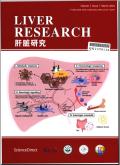Noninvasive prediction of high-risk esophageal varices by spleen and liver stiffness measurements using sound touch elastography
IF 2.1
Q2 Medicine
引用次数: 0
Abstract
Background and aims
Noninvasive assessments play a crucial role in ruling out high-risk esophageal varices (HREV) in cirrhotic patients. However, the value of sound touch elastography (STE) in predicting HREV has not been comprehensively investigated. Therefore, this study aimed to establish prediction models based on liver and spleen stiffness measurements obtained by STE and provide assessment strategies and cutoff values tailored for different clinical situations.
Methods
This prospective study included cirrhotic patients who underwent esophagogastroduodenoscopy (EGD). Liver and spleen stiffness measurements by STE were performed within six months of EGD examination. Various prediction models and their corresponding cutoff values were established for different clinical situations, incorporating spleen diameter and laboratory parameters.
Results
A total of 154 cirrhotic patients were included in the study and stratified into training (n = 119) and validation (n = 35) sets. Multivariable analysis revealed platelet, spleen diameter and spleen stiffness measurement as independent predictors of HREV. The model incorporating spleen stiffness measurement, platelet, and spleen diameter demonstrated superior performance in predicting HREV, yielding an area under the receiver operating characteristic curve (AUC) of 0.878 and 0.853 in the training set and validation set, respectively. Application of this model for screening cirrhotic patients could avoid EGDs in 39.7% (27/68) and 35.3% (6/17) of patients in the training and validation sets, respectively.
Conclusions
Liver and spleen stiffness measurements obtained through STE are valuable for predicting HREV in cirrhotic patients. The developed prediction models and their corresponding cutoff values provide tailored solutions for various clinical situations, thereby effectively reducing the need for unnecessary endoscopies.
用声触弹性成像测量脾脏和肝脏硬度无创预测高危食管静脉曲张
背景和目的无创评估在排除肝硬化患者高风险食管静脉曲张(HREV)中起着至关重要的作用。然而,声触弹性成像(STE)在预测HREV中的价值尚未得到全面的研究。因此,本研究旨在建立基于STE获得的肝脏和脾脏刚度测量的预测模型,并提供适合不同临床情况的评估策略和截止值。方法本前瞻性研究纳入了接受食管胃十二指肠镜检查(EGD)的肝硬化患者。在EGD检查的六个月内,用STE测量肝脏和脾脏的硬度。根据不同的临床情况,结合脾脏直径和实验室参数,建立了不同的预测模型及其相应的截止值。结果154例肝硬化患者被纳入研究,分为训练组(n = 119)和验证组(n = 35)。多变量分析显示血小板、脾脏直径和脾脏刚度测量是HREV的独立预测因子。结合脾脏刚度测量、血小板和脾脏直径的模型在预测HREV方面表现出色,训练集和验证集的受试者工作特征曲线下面积(AUC)分别为0.878和0.853。应用该模型筛查肝硬化患者,训练集和验证集中分别有39.7%(27/68)和35.3%(6/17)的患者可避免egd。结论通过STE测量银和脾脏硬度对预测肝硬化患者HREV有价值。开发的预测模型及其相应的截止值为不同的临床情况提供了量身定制的解决方案,从而有效地减少了不必要的内窥镜检查需求。
本文章由计算机程序翻译,如有差异,请以英文原文为准。
求助全文
约1分钟内获得全文
求助全文

 求助内容:
求助内容: 应助结果提醒方式:
应助结果提醒方式:


